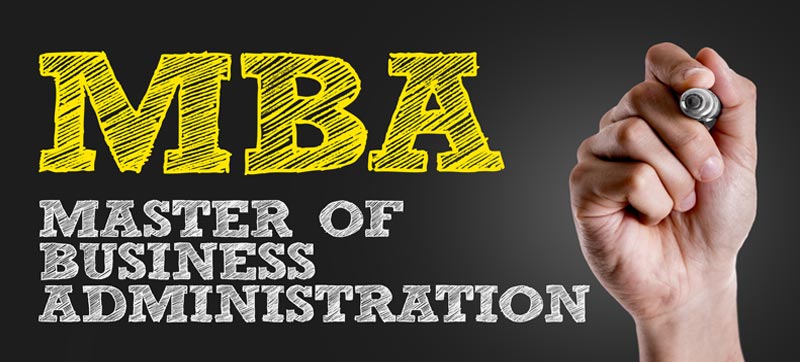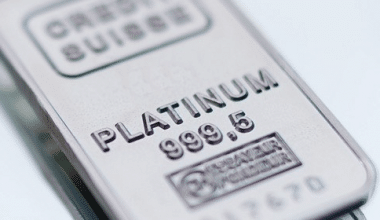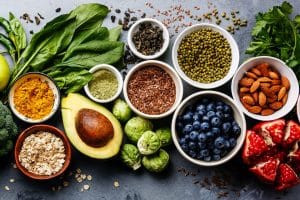Production is the process of creating or manufacturing items and products from raw materials or components. In other words, production takes inputs and uses them to create an output that is fit for consumption—a good or product that has value to an end-user or consumer. Here, we’ll put you through the production function and how production management is beneficial to a business.
Understanding The Concept Of Production
Production has economic significance since it creates an output that has value and will meet human desires and requirements.
Simply defined, production provides items that people desire and are ready to pay for, which supports the economy and allows businesses to continue generating more and more outputs.
In economics, a business that produces goods is known as a “producer,” and these businesses use the resources available to them (both material and immaterial) to create items that consumers wish to buy.
Inputs do not have to be raw materials. An input might also be immaterial or intangible, such as production planning or technical and industry know-how.
Companies are increasingly outsourcing industrial operations in order to minimize costs. These businesses pay a third-party corporation a fee to handle product production so that they may concentrate on product design, marketing, and sales.
A garment company that outsources to an internet production company and then focuses on distribution rather than manufacturing the clothes is an example of this.
Elements Of Production
Making big-picture production decisions that affect the efficiency levels of product creation and sales is a crucial component of being a manufacturing manager. The following are the important elements involved in making production decisions:
#1. Quantity to be produced
Examine the order number of your products to establish your production method and creative procedure. If you realize you need to make large quantities of the same product at once, you can use a mass-production approach. If you’re producing numerous unique products simultaneously, you may need to use a separate and more sophisticated production procedure.
#2. Mass production
Some products or materials may necessitate closer design or manufacture in order to deliver unique and personalized characteristics or elements to the product that you may have promised consumers. As a result, assess whether mass production or manufacturing is the best option to pursue. Instead, you can plan a non-automated process that takes longer for product designers to complete but results in a hand-crafted, customized finished product.
#3. Useful technology
Choosing the best manufacturing method largely depends on the technologies available. For example, if you have a high number of the same product orders, you may not be able to follow a clear mass production structure if you don’t have the right technology to track, categorize, or produce these products accordingly. Consider the technology you have available and the permitted money you can use to purchase the essential systems and things to employ the production process.
#4. Input combinations
Input combinations are the labor and capital approaches used to manufacture a product. Before selecting how many goods to make and how to make them, you must ensure that the material costs and staff pay are reasonable. This ensures that you are still earning enough income from the products to produce a decent and financially stable profit, which allows the firm to function correctly.
Types Of Production
The various methods of production that businesses might employ depending on their product and organizational needs include:
#1. Mass production
Employees in mass production continuously manufacture the same things. Team members are often divided into separate workstations for everyone to utilize at the same time, with each workstation representing one material or addition to a product. When the product reaches the end of the line, it is completely finished and ready to be delivered to the consumer. While one component of the product is being worked on, another is running, making the process more efficient and productive.
#2. Craft production
This is a non-automated method that is typically employed on products that require personal care and attention in order to offer a quality product to the user. Many businesses employ this form of production when clients order customized products with certain colors, shapes, patterns, or text on the design.
#3. Batch Production
When an organization needs to produce numerous sets of things, it will often use batch production. When this happens, personnel work in subsections of each group to accomplish distinct sections of specific batches. It works similarly to a mass production method, but instead of making just one product, the organization develops numerous different items and divides them into various groups, often known as batches.
#4. Job Production
Most businesses use a job production approach when producing low-demand items. This entails creating a single item all at once rather than breaking into groups that work on distinct components of the product.
Because clients order this product less frequently than others, personnel may temporarily leave their place in the mass production process and complete the entire automated system of creating this product at once before returning to other continuing activities. This procedure is normally reserved for things that are in extremely low demand or are one-of-a-kind finds for consumers.
#5. Service production
This procedure involves automating a specific client service. You can deliver customized services via machines that allow users to request and receive assistance by pressing buttons. Technical support is another means of producing services. If consumers encounter problems with one of the company’s technical products and require more assistance on how to use them, they can easily access resources and information to address their inquiries if the support team is currently unavailable.
#6. Mass personalization
This is a mass production line that develops unique and personalized products based on the needs of consumers. The consumer may be able to select specific customization options from a list of colors, shapes, or patterns. When clients select particular options, the mass customization process completes a unique and automated process for each individual item.
Many clothing and merchandising stores, for example, employ this approach to create clothing and accessory items based on consumers’ dimensions or color preferences.
What Is the Production Function?
A production function is a mathematical equation or representation of a firm’s relationship between tangible inputs and tangible outputs during the creation of goods. In the absence of the other three factors, a single element cannot aid output. In basic terms, it outlines the approach that will permit the most efficient manufacturing of commodities by technically merging the four primary factors of production—land, enterprise, labor, and capital—at a certain timeframe utilizing a specific technology. It shifts as technology advances. In the 1840s, J. H. Von was the first to develop the proportions of this function’s initial variable.
This function is determined by the price factor and output levels that producers may easily perceive. Furthermore, every industrial plant converts inputs into outputs. As a result, the factors must define the level of items produced in order to maximize revenues and reduce costs. As a result, the production function is critical in determining the amount of output required for enterprises to create at the stated price of items. It determines the output and the combination of inputs at a given capital and labor cost.
The phenomenon known as diminishing returns to scale occurs when a firm’s marginal cost begins to climb at increasing production levels. The declining returns to scale result in a smaller proportional rise in output quantity when the input quantities are increased. This function also identifies the increase in marginal cost.
Formula
The general production function formula is: Q= f (K, L), where Q is the output quantity, L is the labor required, and K is the capital involved in the manufacture of the commodities.
f is a mathematical function that depends on the input for the desired output of the production. For example, if the equation is rewritten as Q= K+ L for a company, it signifies that the company uses two units of investment, K, and five units of labor. As a result, the producer can produce 5+2 = 7 units of commodities. As a result, increasing the production components – labor and capital – will increase the quantity produced.
Types of Production Functions
Based on the input variables, there are two basic types of productivity functions, which are explained more below.
#1. Long Run
All inputs, such as labor or raw materials, are variable in the long-run production function. As a result, the operation is adaptable because all of the input variables may be altered to meet the needs of the company. Furthermore, in economics, producers can apply the law of equi-marginal returns to scale. If the producer increases input after reaching the optimal production capacity, it results in a lesser increase in output. It means that the producer can acquire the optimal combination of factors and adjust the manufacturing size at any time. As a result, the factor ratio remains constant.
Furthermore, due to low obstacles to entry and exit, enterprises are free to enter and exit in the long run.
#2. Short Run
The firm’s input amounts cannot be varied in the short-run production function. The law of variable proportion applies here. The level of activity in the short-run function does not vary. The factor ratio changes because only one input changes while all the other variables remain constant. Manufacturing enterprises encounter exit hurdles. As a result, they can be permanently shut down but cannot cease manufacturing.
Only the nature of the input variable dictates the type of productivity function used by any manufacturing firm. If variable input is used, the function is short-run; otherwise, it is long-run.
What is Production Management?
Production management is the process of managing production inputs (raw materials, capital, and labor) to produce outputs (finished products). It is required for businesses that create items to guarantee that operations and logistics (supply chain) work properly. Production management and operations management go hand in hand.
Why is Production Management Important?
Production management is crucial because it reduces costs when done efficiently, which means the procedures utilize resources to increase a company’s market competitiveness. This, in turn, helps organizations manufacture high-quality products that are delivered on time in order to meet business objectives, and so boosts the company’s reputation.
What Does a Production Manager Do?
Production management job descriptions differ depending on the industry and degree of the profession, but in general, someone working in production management has the following responsibilities:
- Managing production processes and looking at inputs to obtain results
- Creating and managing work schedules and budgets
- Monitoring manufacturing to find methods to improve efficiency and operations
- Effective communication with personnel, stakeholders, suppliers, and customers
- Control safety and quality
- Oversee a production team
- Identify, assess, and resolve any manufacturing or staffing issues.
Required Skils For Production Management
To work in production management, you must have both technical and workplace skills.
Technical skills:
- Competency with technical equipment and maintenance
- Six Sigma
- Business acumen
- Financial and industry knowledge
- Knowledge of industry regulations, such as EPA (Environmental Protection Agency) and OSHA (Occupational Safety and Health Administration)
- Ability to use Microsoft Office and email
Workplace skills:
- Teamwork
- Problem-solving
- Leadership and management
- Organization
- Capability to multitask
- Detail-oriented thinking
- Strategic planning
How to Become a Production Manager
To become a production manager, you must possess the necessary abilities, education, experience, and certifications.
#1. Get a college diploma.
A bachelor’s degree is often the minimum educational qualification for becoming a production manager, with 62% of managers possessing one and 18% holding an associate degree. However, if you have a high school graduation and a significant amount of experience, you may be able to apply for a position.
Bachelor’s degree subjects that are useful include business, engineering, industrial management, manufacturing, and others. Some positions may necessitate an MBA, depending on the organization and level of responsibility. Some schools provide opportunities to earn a production management degree.
#2. Get some training
On-the-job training is usually the most effective approach to learn. A new employee will frequently spend the first several months learning about the firm and job responsibilities, and then putting those methods into practice.
An internship in manufacturing or production is beneficial in learning industrial operations.
#3. Gain experience.
Most jobs in production management require prior experience, especially if you want to climb to a leadership position. Before pursuing more responsibilities, you must first obtain an entry-level employment and accumulate a few years of experience.
#4. Think about becoming certified.
Given the rivalry for jobs, having appropriate credentials can help your resume. Here are a few examples:
- Manufacturing Management Certification (CTME)
- Incident Safety Officer – Fire Suppression Certification (ISO)
- Certification in Production and Inventory Management (CPIM)
- Manager of Quality/Organizational Excellence Certification CMQ/OE
- Six Sigma Green Belt
- Master Project Manager (MPM)
- HOW TO MANUFACTURE A PRODUCT: Step-By-Step Guide to Turn Your Idea Into a Product
- MASS INCOME TAX: Definition and Rates
- PRODUCTION MANAGER: Definition, Duties, Salary, and Course
- MASS MARKET: The Ultimate Guide






